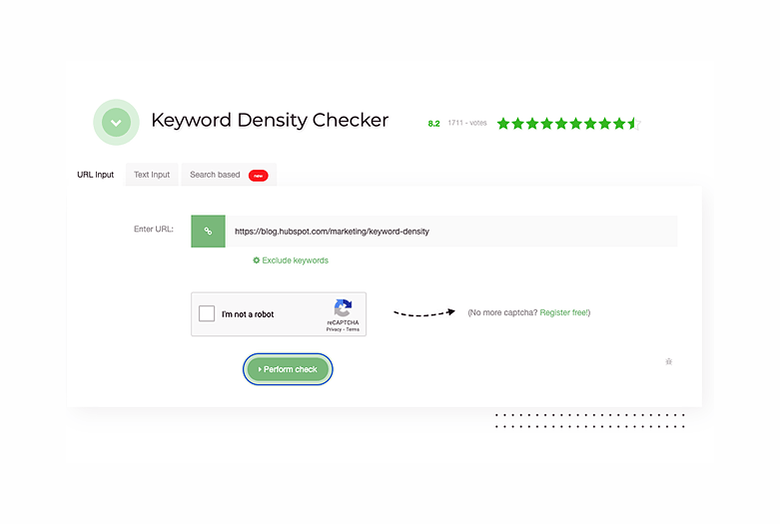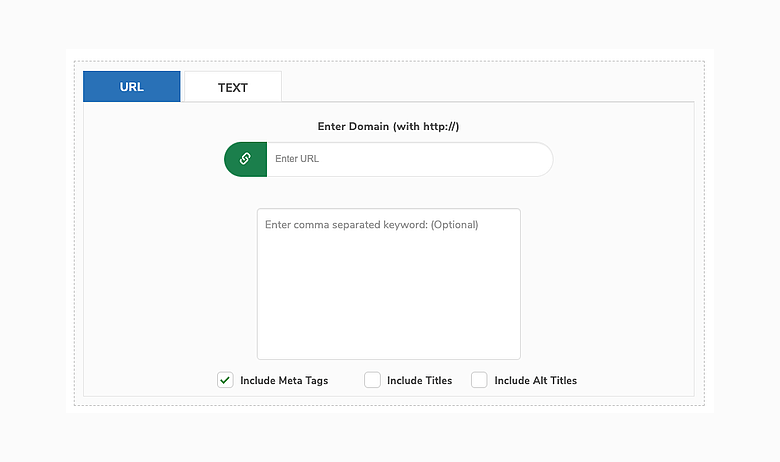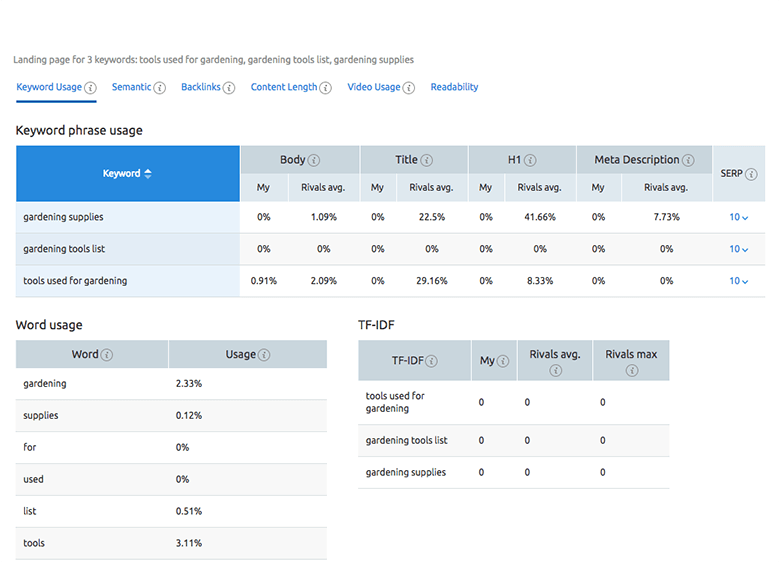
What is Keyword Density, and how is it calculated?
As you know, keywords are the main building blocks of written content. These are usually the search terms the target audience uses to access information online. But when you plan to write SEO-optimized content, how many keywords are enough? How much is too much? How much is too little? Understanding the topic of keyword density answers all these types of questions. If you want to know what is the density of keywords? What is its importance, and how is it calculated? Stay with us until the end.
What is keyword density?
Content writers use a specific keyword as the focus of their writing and compose content that aligns with it. The keyword density refers to how often a particular keyword appears on a page. This density is usually expressed as a percentage of the total words on that page. But in a modified context, this term can also be used as the whole Number of keywords plus related or secondary keywords and the LSI used in the content.
The importance of keyword density
In general, keyword density helps search engines and website visitors understand a page’s content. This issue is an essential part, and one of the aspects of search engine optimization, or SEO, significantly impacts the ranking of websites.

What is keyword stuffing?
In the past decades, marketers would stuff their website pages with as many keywords as possible to increase their website’s rank. This practice, known as keyword stuffing, is no longer effective. Because search engine algorithms have become more intelligent and complex, Google may mark your page as spam if it detects too many keywords. Your actions may even result in a fine.
Over time, keyword stuffing gave way to Keyword Density. Unlike keyword stuffing, which merely aims to fill the text with keywords, keyword density focuses on using them correctly and effectively.
How to calculate keyword density
So far, in the article, we have talked about what keyword density is, its importance, and its difference from keyword stuffing. But how is this density calculated?
In general, calculating the density of keywords has a simple formula. The number of times a keyword is used in a text is divided by the total number of words used, multiplied by 100. For example, if your context has 1000 words and your keyword is used ten times, the density of The desired keyword will be a percentage.
10÷1000 = 0.001 → 0.001×100 = 1%
The above formula only works for single-word keywords. But keep in mind that when people search the Internet to find what they want, they don’t just search for a word. They may use phrases that contain more than one word. For example, someone looking to find the best traditional entertainment places does not just search for the phrase entertainment.
Multi-word keyword phrases add a new level of complexity to keyword density. These terms change the calculations you must perform to calculate your keyword density. The formula required here is as follows:
KD = (KR / (TW – (KR × (NWK-1)))) × 100
KR = number of repetitions of the keyword
NWK = number of words used in your keyword phrase
TW = Total words in the text
An example of calculating the keyword
Suppose a blog post has 2000 words. You have repeated the main keyword more than 30 times, and that keyword also contains three terms. Now, let’s calculate the keyword density.
In this example, KR is 30, NWK is 3, and TW is 2000. According to the formula, the keyword density percentage or KD (keyword abbreviation) is equal to:
- KD = (30 / (2000 – (30 x (3-1)))) x 100
- KD = (30 / (2000 – (30 x 2))) × 100
- KD = (30 / (2000 – 60)) × 100
- KD = (30 / (1940)) × 100
- KD = 0.0154 x 100
- KD = 1.54%

The best percentage of KD in a text
Many SEO experts consider the optimal KD 1% to 3%. Google documentation states that your keyword density for each word or phrase must be less than 5%, so your article is not recognized as spam. In the meantime, you should decide how many repetitions of the keyword suit you, and you need to do a little trial and error. We recommend a density of about 2% to 3%.
Tools for calculating KD
You can easily calculate KD by finding the total number of words and keywords used on each website page. Increasing the number of pages on your website takes time and energy. You will need Keyword density calculators to help greatly simplify this process. The best of these tools are:
Keyword Density Checker
Keyword Density Checker is a free web-based tool to calculate KD. To work with it, enter the site address or text in the specified field, then complete the captcha “I’m not a robot” to check the KD. While this simple tool doesn’t offer an in-depth analysis of the other options further down the list, it’s a great way to get an overview of the KD of your text.
Why do we recommend it?
Keyword Density Checker includes a colored alert for keywords with abnormally high repetition levels. So you can easily see which one to delete.

SEOBook Keyword Density Analyzer
Like the tool above, SEOBook Keyword Density Analyzer is a free web application, but you need to create an account to use it. Along with providing a keyword density report, this tool allows you to search for your desired keyword on Google and collect data from five top-ranking pages using the same keyword. Then, analyze them to see how your keyword compares to them.
Why do we suggest it?
SEOBook keyword density analyzer allows you to insert meta information in your article and remove redundant words from the text. This tool can also set a minimum word length for your writing. This tool allows you only to use words that meet specific character count criteria.

Copywriting Keyword Density Checker
Copywriting Keyword Density Checker is a tool that shows your top keywords based on density and standard color codes. This tool is a bit more limited than other tools in this list. That’s because it doesn’t allow you to remove extra words and include meta information. But for starters, it’s a unique tool.
Why do we recommend it?
If you are looking to check the KD of your text at a glance quickly, Copywritely’s simplicity and user-friendliness make it a good option for you. You can sign up for a Copywritely account for more advanced text error checking.

Semrush’s On-Page SEO Checker
The powerful SEMrush On-Page SEO Checker software includes a KD checker called “keyword phrase usage.” In addition to evaluating KD, this tool contains automatic SEO reviews and reports, evaluation of titles and metadata, a backlink search tool, scanning, etc. It will also help you compare your KD with competing websites.

last word
Regarding search engine optimization through written texts, keyword density is among the most misunderstood concepts. If you understand and use this concept correctly, you can maintain a healthy balance for placing keywords in your writing and avoid keyword stuffing.
Elevating website traffic involves analyzing visitor behavior, refining the user experience, and employing a comprehensive mix of digital marketing techniques, such as email campaigns, influencer partnerships, and online advertising.




Lasted Comments (0)